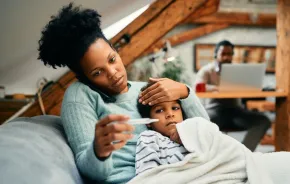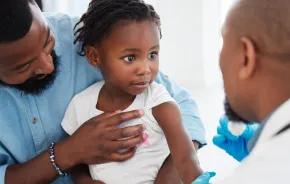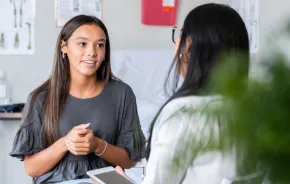It's the time of year when many of our hearts -- and pocketbooks -- turn to helping people in need. Something about the season brings out the giving in us. But some local elementary schools don't wait for winter to give back -- they have a plan for giving, and teaching children to give, all year round.
Raising the money
Most elementary schools keep it simple, holding coin drives or bike-a-thons to support all kinds of charities. At Seattle Country Day School, second-graders collect money to pay for one family's wintertime heating bill. "Each day the students collect and count the money and graph their progress," says Jackie Bradley, head of the K-3 Division at Seattle Country Day. "At the end of the drive, Dennis Smesrud from Puget Sound Energy comes to accept the donations. The students feel very proud that they have found one small way to give back to their community."
Creative programs also allow kids to sell things to raise money. Seattle Country Day School third-graders run a store called the Spirit Zone, selling school logo clothing and donating the profits. Last year, they supported the Katrina Hurricane Fund, the Humane Society, a school in Uganda, and a local food bank.
Each year, third-graders at Captain Charles Wilkes Elementary School on Bainbridge Island participate in interesting sales campaign: The class designs, creates, produces and sells a "Kids Can Make a Difference" calendar. Over the past 13 years, they have made over $110,000 for projects on their sister island in Nicaragua, Ometepe.
"Even though our economic realities are vastly different from the Ometepinos, our students come to realize what is truly important in life," says teacher Alice Mendoza. "They see that all people are far more alike than different."
"Because of the sister island connection, the kids get hooked, not only this year but in the future, on the power they have to make a difference."
Collecting the goods
Kids between 6 and 10 can also organize collections of needed goods, such as food, clothing and books. Some schools take these projects even further. Students at Seattle's Pathfinder K-8, for example, advertised their own food drive, then collected donations, visited food banks, and helped with sorting and packing.
Seattle Country Day School goes above and beyond with its holiday gift drive for the Queen Anne Helpline. The children not only collect the gifts, they make their own wrapping paper and wrap the gifts themselves too.
Environmentally active
Taking care of planet Earth is a great way for grade-schoolers to contribute. Students from many local schools help maintain parks and restore habitats. Even the youngest kids can help plant and care for flowers and trees, pull weeds, rake, and remove trash. Kids love getting their hands dirty -- and can learn about the environment and contribute to their communities at the same time.
The Washington Department of Fish and Wildlife has signed up about 600 local school to their Salmon in the Classroom project. The schools, including the Island School on Bainbridge Island and Seattle Country Day School, learn about the life cycle and habitat of salmon by receiving salmon eggs, raising them, and releasing them as fry into streams and creeks.
Hands-on helpers
It's not always easy to find philanthropic activities for younger kids that are truly hands-on, allowing them to donate their own time and effort rather than simply tapping into the resources of the adults around them. Even young children have useful skills, however, and they can make real contributions to their communities.
Lisa Clayton, school librarian for Pathfinder K-8, has guided elementary students to successfully prepare paperwork for mass mailings at Childhaven, sort and hang up clothing at Treehouse For Kids, and even give manicures to residents at the West Seattle Senior Center. "We are trying to expose kids to many different types of community service so that each one can discover his or her own personal passion to sustain a lifetime of giving," she says. "If we don't teach them that a community works through the involvement of its members, then their communities will crumble."
In many ways, our local elementary schools use service projects to teach kids to become responsible and caring citizens; teachers use them to engage their students in active learning across multiple subjects; children become empowered by making a difference; and public needs are fulfilled. When schools teach service, we all win.
Laurie Thompson writes for children and the grownups who love them. Please visit http://www.LaurieThompson.com to see more of her work.
Resources for elementary school giving
- United Way of King County Volunteer Search, www.volunteersolutions.org/uwkc/volunteer/search.tcl or contact Derek Wentorf, Volunteer Programs Coordinator at dwentorf@uwkc.org or 206-461-3644.
- United Way of Pierce County Volunteer Search, www.volunteersolutions.org/uwpierce/volunteer
- United Way of Thurston County, www.unitedway-thurston.org/waystogive
- Washington Department of Fish and Wildlife, Salmon in the Classroom, http://wdfw.wa.gov/outreach/education/salclass.htm or e-mail: chandjac@dfw.wa.gov or call 360-902-8307.
- Washington State PTA Programs, http://wastatepta.org/programs/programs.htm
- Service Learning K-12, http://www.servicelearning.org/k-12home









